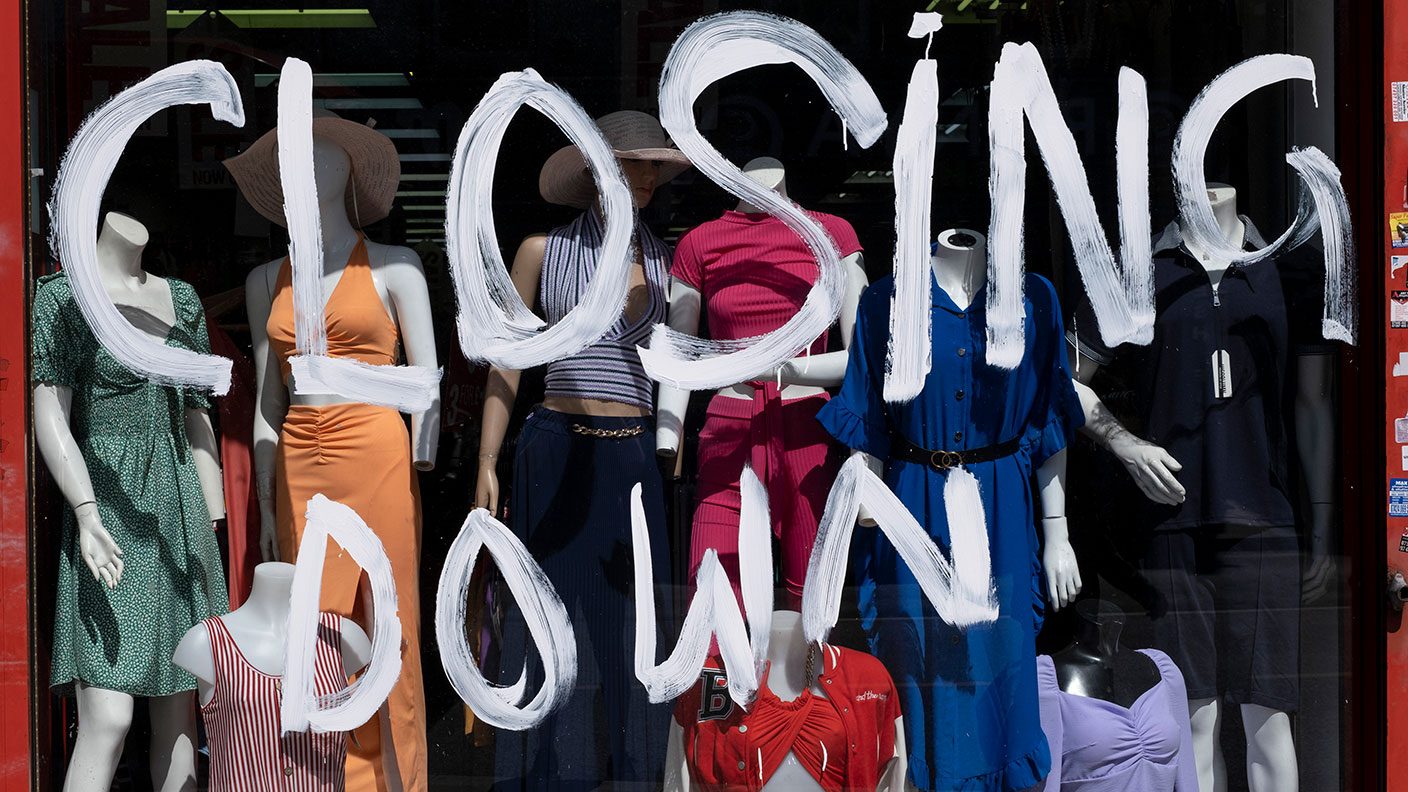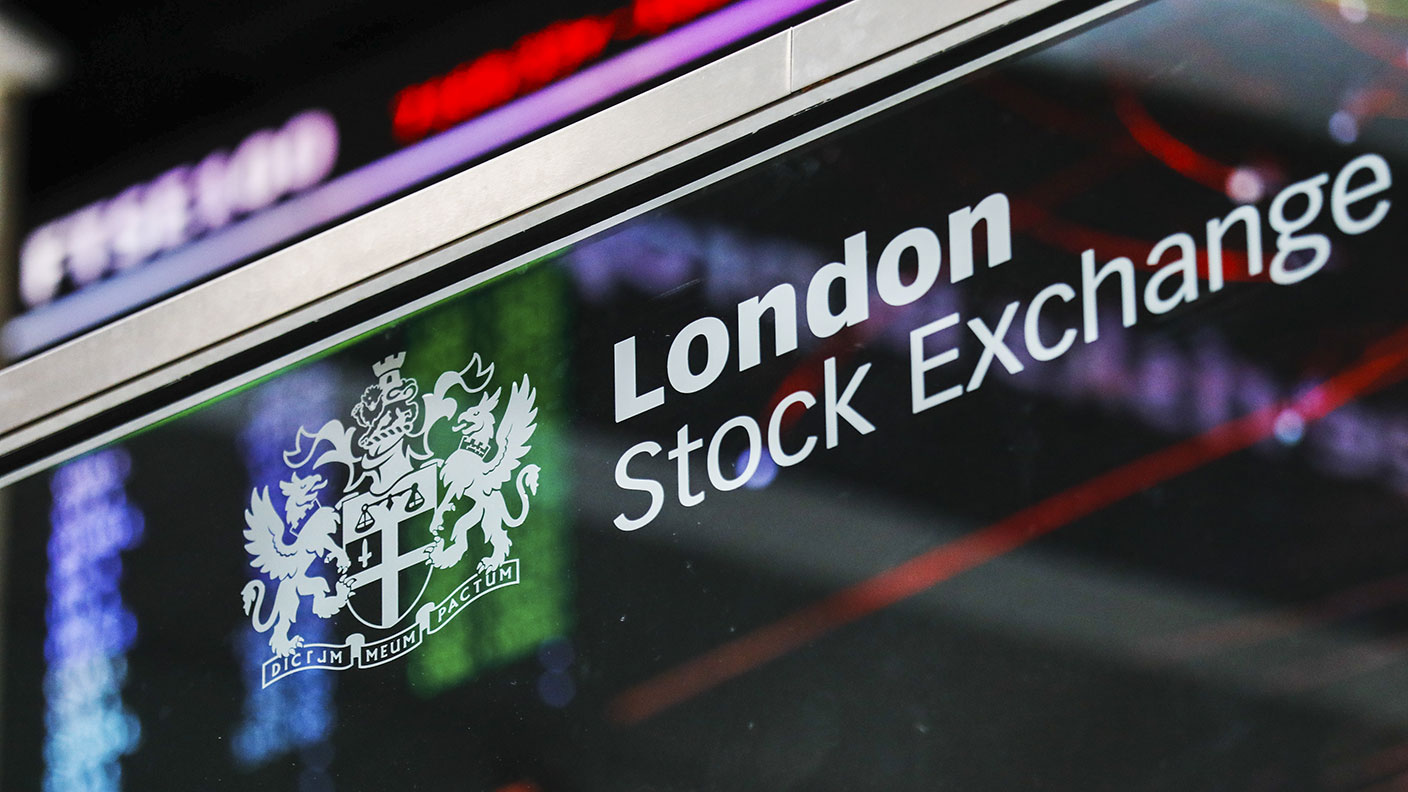Charles Plowden: where to find long-term growth
Merryn Somerset Webb talks to professional investor Charles Plowden about investing for long-term growth, and where to find companies that will give above average returns.

If you missed any of Merryn's past interviews, you can see them all here.
Hi, I'm Merryn Somerset Webb, editor-in-chief of MoneyWeek magazine. Welcome to another one of our video interviews. Here with me today is CharlesPlowden, who is the manager of theMonks Investment Trust, which is currently managed by Baillie Gifford. We're going to talk about the trust at some length. It is a growth trust but there are various different definitions of growth and an awful lot of holdings that you might think don't necessarily fit into the growth pattern, right? So let's start by talking about what you mean by growth. It's a global growth fund. What does that mean?
Charles: Well, very straightforwardly, global just means we're choosing from the broadest possible opportunity set. There's nothing excluded for reasons of geography. So every stock that's big enough is a potential investment. And by growth, we mean companies that will grow consistently - perhaps not consistently but will grow - over the long term at an above-average rate. And our minimum growth level is typically seen as at least 10% per annum, which would itself be well above the long term averages.
MoneyWeek
Subscribe to MoneyWeek today and get your first six magazine issues absolutely FREE

Sign up to Money Morning
Don't miss the latest investment and personal finances news, market analysis, plus money-saving tips with our free twice-daily newsletter
Don't miss the latest investment and personal finances news, market analysis, plus money-saving tips with our free twice-daily newsletter
Merryn: When we're talking about growth, we're talking about revenue growth, profit growth
Charles: We're talking about per share metric growth, principally earnings growth, cashflow growth, dividend growth. But real growth. Acquisitive growthdoesn't really count, if you are funding it by issuing lots and lots of shares. Lord Hanson, going back to the '70s and '80s, he grew his top line very quickly but he didn't always grow hisearnings per share very quickly. So, a broadest possible opportunity set. All we're looking for is top quartile growth, thewell above average growth. We measure growth over five year period and we are not looking for a metronomic every year on year you have to always grow. And that's where the different categories of growth come in. Some of those categories of growth we definitely do expect every year. That's the growth stalwarts. They are only there because they are reliable and it's a repeatable process.
Merryn: What sort of company would fit into that?
Charles: Typically,it would be the beer companies, the food companies, it is to be the tobacco companies but we don't have those anymore. We don't really have anything in the food companies anymore either. These sorts of public sector utilities - chewing gum, chocolate, biscuits, beer - they actually have been terribly popular on the stockmarket recently because they are the safety first. At a time of uncertainty, everyone flocks to the most certain earning stream, and of course we have now got all the bond refugees as well.
Merryn: Yes. But you're not seeing actual business growth involves of 10% a year, are you?
Charles: No. Not anymore. We've had this combination,that the valuations have gone up and the growth is fading away, largely because a lot of the growth has been based on emerging market opportunities where there's been a temporary slow down and there's been currency weaknesses. In a hard currency, most of those companies haven't been producing the 10% growth. But we wouldn't sell them because the Brazilian real's gone down this year and the earnings growth is going to miss 10%. We would typically look at constant currency underlying growth, rather than an accounting measure of growth. But what we're looking for is long term compounders.
Merryn: Give me an example of a company that's still growing that fits into that.
Charles: Nestl is the classic example of the stock we'd held for 11 years. We've sold it at the beginning of this year because of the valuation and because what had been tailwinds for many years have become some headwinds, in terms of healthy eating. The move towards healthy eating, the margins have got too high. In my view, the top line is beginning to slow, the margins are no longer going to go up, they might come down a bit. So it's going to be hard-pressed to produce much by the way of earnings growth. And yet it's been re-rated.
Merryn: So that one's gone. What fits into this category now today? I'm fascinated by the idea that you can actually find a stock that has reliable 10% growth a year that comes in at a price that is even remotely reasonable. Is there one you're holding today that fits the bill?
Charles: This is one of the interesting issues because there's been so much bond money moving into regular dividend payers. As a category, they're all very expensive. Where we've been looking is the ones that have a little bit of fluff on the outside, what we perceive to be short term problems, but are in a long term position of strength. This year, we bought Novo Nordisk, which has been one of the world's most wonderful growth stocks of the last 30 years, the diabetes care business. It's been warning of pricing difficulties in America, which we think are largely generic problems that are common to everyone in the drug industry but we don't think they're going to see deflation. It's just they're finding it harder to push through price increases. They're also at a sort of disjunct, if that's the right word. They've got a surge of new products about to hit the market over the next 12 months. Again, you don't tend to get strong price increases with older products. You get those on newer products. We've bought that, which has been de-rated, - it's on a high teens multiple of earnings - because we think the long term growth will resume. It's not economically sensitive. This is an opportunity to get into something that's having a short term worry. But you're right.
Merryn: Ok. To you, the high teens feels like a reasonable valuation.
Charles: Yes. On a long term double digit growth.
Merryn: And then what would it have to get to for you to say, 'Well, actually, now it's too expensive.' What made Nestl too expensive?
Charles: Typically, the rule that we use is, is there a plausible scenario where we can double our money in the next five years, which is a 15% share price return over the next five years. And if we can't, if you really have to be wildly optimistic to get that doubling, then the chances are we shouldn't own it. In the case of Novo Nordisk, what we think will be 10+% earnings growth on a high teens multiple, we can see that the earnings growth will deliver 2/3 of our hopeful return. We're only looking for a relatively modest rerating over the next five years to get our doubling. If it ends on 22 time earnings and it grows at 10%, we've got that, we've doubled our money. So we're very happy to own it because even 22 times, relative to its history would look like a very fair rating.
Merryn: That's growth capital rule number one. How many categories are there?
Charles: There's four.
Merryn: We'd better get moving.
Charles: There's four. And that's one of the smaller ones at the moment. Before we leave the stalwarts, in the end of 2008, early 2009, that category was 40% of our portfolios because we were cautious and we were worried about the sustainability of the global growth trend we were on. It's now down about 20%. Over the last several years, we've basically been taking money out of growth stalwarts and putting it into higher return, higher potential businesses. We're down at about 20%. I should also put a proviso, with all these growth categories, while Monks is now following this framework, it's only done so for 18 months. So when I'm talking about 2008, Monks was managed by a different team and a different approach. What I'm talking about is what I've done for the institutional class. And Monks is now following the same strategy. I don't want to confuse people that get their Monks annual reports and say that's not what they used to do. The next, and largest, growth category is what we call rapid growth. This is very much the area that Scottish Mortgage is focused on.
Merryn: The Scottish Mortgage, by the way, being another investment trust that is also managed by Baillie Gifford at the moment and is in the MoneyWeek investment trust portfolio. So a lot of you probably hold it.
Charles: Good. Rapid growth stocks make up just under 40% of Monks at the moment but probably more than 2/3 of Scottish Mortgage.
Merryn: And these companies are Amazon, Tesla.
Charles: Yes, these are companies that can grow between 15 and 25% per annum over a prolonged . We believe can and we believe will, obviously, because otherwise we wouldn't own them. They have the strong potential to do so. The big names in that category, and the mostsuccessful investments are the likes of Amazon, Google, Tesla, (inaudible) the South African media company. Tesla isn't but those are all generally companies that are embracing new technology. A lot of them are internet based, mobile communications, database. But it's a broader category about innovation, about the application of technology, high return on capital, ability to scale very quickly. Growing at 25% per annum for 10 years is not nearly as implausible these days, in our web based world, than it was 20 or 30 years ago when you had to build a factory in each country, set up a distribution channel.
Merryn: The fact that you need very little capital to grow these businesses.
Charles: And they scale immensely quickly. Just think: I can't remember which year Facebook was founded in but it's certainly less than 15 years old and it's already global. The biggest, with 1.5 billion regular users.
Merryn: Are you a regular user of Facebook?
Charles: I am.
Merryn: Are you?
Charles: I am, yes. I was an early adopter, the main reason being I've always been very interested in social networks and the power of networks and platforms, which is of course what's drive that whole category of companies. The power of the network: The more people you get, the more useful it becomes. And if you're trying to sell things, like Amazon, the lower the costs, the less the friction, the more services you can offer, the more customers. And so on. I've always been very interested byhow these networks work.I did sign up for Facebook, I don't know how long ago but really quite early, because I felt that it was going to make a big difference. I never got onto Friends Reunited, though. I missed that step of evolution.
Merryn: Could the same happen to Facebook?
Charles: We think not. Simply because the power of the positive cycle.
Merryn: The scale.
Charles: The scale is so huge that it's now very difficult for anyone else to compete. And actually, our views have gone further because Facebook clearly isn'tthe only social network and Amazon isn't the only Commerce website. Our view is that these networks tend to winner takes all, in which case you don't really want to put your money into the number two and the number three. In fact, for months, over the last year, we've sold out of eBay, which is clearly falling further behind Amazon, and we've sold out of Twitter, which is clearly falling further behind Facebook.
Merryn: So Twitter and Facebook can't coexist?
Charles: I think they can coexist but I think Facebookis continually eating Twitter'slunch, it's jam tomorrow. Facebook is continually trying to replicate the Twitter service, which is very interesting and useful. But if that were another button on your Facebook app, you'd much rather stay on one site than you would got to a second site to look up your news stories.
Merryn: Given this view of constant growth, constant high level growth, is there any price at which the likes of Amazon, Facebook etc. would leave your portfolio?
Charles: Yes, of course there is. And really,the test that we apply is can wereasonably hope to double our money in the next five years. And as these companies have got bigger, size itself becomes a constraint because you rub up against regulators and government and policy and there can be social resistance simply because Amazon's everywhere and Facebook is everywhere. Size can become a problem. But if you look at the markets that they're exploiting, and the growth, the move to mobile,both for ecommerce and for advertising, there is still a huge amount of momentum to go to. We recently have been looking at both Amazon and Facebook, can we double our money, again. It's getting harder than it was two or three years ago. But we're still on what we think are not completely implausible assumptions of market share and so on. We still think we can get that. That's been the thing. That's why the big thing that hasn't happened over the last year or 18 months is we haven't taken any money out of Amazon, Google, Facebook, (inaudible) despite the fact they've been among the best performing stocks in the world so they become larger parts of our portfolio. We haven't because we can see the markets that they're addressing are growing very rapidly as well. The other leg of it is not just that Facebook's existing business or Amazon's existing business is scalable and the profits will be growing rapidly. We can't really see under the bonnet but we know these are the companies that are the biggest investors in R&D in the world at the moment. There's a very small number of companies that are continually addressing potential huge markets, whether it's artificial intelligence, virtual reality, autonomous cars, healthcare, medical discovery - that's one of Google's big areas. The lead investors, it's always two or three of Google, Amazon, Microsoft, Facebook, Samsung. They're the guys who are there all the time.
Merryn: And you own all of them.
Charles: In the meantime, the rest of the corporate sector - look at the healthcare sector, for example, Big Pharma - they're cutting R&D and they're cutting development spend. The big old companies are not investing in new alternative energy. Two of them are but most of them aren't. They're going to miss out on the next generation of growth because they're not investing.
Merryn: One of the things you look at when you look into a stock is how big is its R&D budget.
Charles: Yes. This is another theme we've been looking at. Are they reinvesting? Are they ploughing profits back to secure growth for the future.
Merryn: Quite brave when what everyone wants is a big dividend.
Charles: Exactly. But this is what sets them apart and it's, I think, what, to an extent, sets us apart in being prepared to back them because you're not going to continually be able to double your profits, double your money if you're not investing in the future, in new products, in new markets. One other very good example is - and I know a lot less about this than a number of my colleagues do - a large part of Amazon's value at the moment is AWS, the cloud web services business, which, five years ago, none of us was talking about, no-one knew anything about. It was, if you like, a moon shot. It was a big business that Amazon were investing a lot of money very quietly. It's probably now 40-50% of the valuation of Amazon. In five years' time, there will be other business, quite probably artificial intelligence based, in some way, where they're also at the moment investing 10s of millions of dollars. We don't know what they'll be but that's why we're backing them.
Merryn: We know they might be out there.
Charles: We know they might be out there. We know that the management are investing for the future. They have a vision and a mission, and they're ambitious. I think if you really want to make money in equities, you have to follow the ambitious.
Merryn: You have to be optimistic, don't you?
Charles: You have to be optimistic. You do. You do. No-one ever doubles your money by being risk-averse. Either you're an investment manager but, more importantly, Jeff Bezos or Bill Gates, none of them ever said, 'How do we avoid making a mistake?' They're all prepared to make mistakes. They're all very flexible in trying lots of different things and changing their mind, closing down the ones that aren't working and supporting the ones that are. And yet, at the moment, a lot of activist funds have tried to make every company be prudent and careful and give the capital back.
Merryn: What's the stock you have most confidence in from this category? If you had to go and sit on a Bahamian island for 10 years and there was one of these really interesting growth stocks that you had to buy and just leave, which one?
Charles: That's really difficult because a lot of the favourites, the winners, are not getting to a market size that is - We can see Amazon doubling, but can we see it double again? Because that would make it a $1.5 trillion company, twice as big as any other listed company has ever been. Absolute size and political power becomes a problem with those. I would probably either go with a smaller earlier stage wannabe Amazon in a different vertical or Ctrip - I had a meeting earlier this week with one of the founders of Ctrip, the Chinese online travel agency - partly because they've done a very good job of their own services but also because they've been very adept at wheeling and dealing. They've recently taken over their number two and number three competitors in the Chinese online travel agency market. They now have something like 70% or maybe more of the market share in online travel bookings in China. As we all now, the Chinese are beginning to travel. Their discretionary spending is going up. It's not just business travel, and it's not just international. There's a lot of inward travel for the Chinese. And Ctrip, through good operations and good politics, has found itself with the dominant market share in a veryimmaturemarket. The market's growing at 20+%. They say it's going to grow at 30% a year for the next five years. If it does,we will be making multiplesof our money on that one. That's a recent purchase for Monks.
Merryn: You'll be happy holding that.
Charles: I think so because I can see in five years' time, it could be four times the size. It will still be smaller than Amazon is today but by then it'll be approaching a global online travel agency with all thebenefits of scale.
Merryn: And a company like that, does that make up an appreciable percent of the Monks portfolio because you hold quite a lot of stocks, don't you?
Charles: Yes.
Merryn: How many do you hold now?
Charles: The total portfolio is just over 110.
Merryn: A lot of companies.
Charles: Yes. There's two responses to that. The first is that the 40 smallest holdings we've got only make up about 20% of the portfolio. We intentionally run a basket of higher risk reward earlier stage less proven growth stocks. Companies that, if they succeed, will make a multiple of our money. But they might not. There's quite a high risk that they won't succeed but then we might lose once our money. I very firmly believe that those odds are terrific: we make four or five times our money but then we lose once. You want to take lots of those bets.
Merryn: Depending on how often you lose, of course.
Charles: Depending on how often you lose. But we want to get lots of those opportunities into the portfolio. There's two approaches to managing that sort of risk, that the companies might go wrong. One is to stay not involved but monitor them until you know they're going to succeed, by which time the stocks have probably already risen 100%. But then you're buying at a lower risk stage but also a lower reward. Or you buya small holding, a basket,and as long as two or three of themsucceedout of your basket of 7 or 8. You're going to still be ahead of the game. That's what we do. We've done back testing that shows that it's these higher risk reward companies, what we call our incubator holdings. They've contributed disproportionately to the positive performance. Typically, they are about 20% of the portfolio and about 30% of the value added. They're worth doing as a whole. Butit would be quite easy to knock them outand get down to 65 or 75 holdings, if I've got the numbers right.
Merryn: It's an enormous amount of work for you to know everything about 100+ stocks. I know you have got two deputies but nonetheless.
Charles: That's the second point I was going to come to. The approach that my team has, the Global Alpha Team, which is now running Monks, is that we're not a separate teamsitting in a corner office doing our own thing. We actually are sitting right in the middle of the whole investment floor and both through informalprocesses and formal procedures, we are set up to try to extract all the best ideas from all of the analysts in the firm. We see ourselves as a vehicle that can reflect the best ideas of Baillie Gifford's, who now have over 100 investors working on the investment floor here in Edinburgh, rather than a team of five. And it's a very different philosophy from the philosophy that (inaudible) which is a separate team and a more concentrated portfolio. They've gota bigger team than us.
Merryn: Presumably, you communicate with them as well.
Charles: Yes. They basicallygenerate their own investmentideasand their own portfoliowhereas we are happy to take ideasfrom anywhere, we're not at all proud. In order to get into the portfolio,it goes through a screening processand ultimately the decisionisMalcolm Spencer's or mine. Sothe three fund managers, we're fully accountable for all thedecisions. We haverelationships withlots and lots of investorswho bring their favourite ideas to usand they get a fair hearing,and a fair number of them get into the portfolios.I don't need to bean expert on every stock in theportfolio.I just need to knowwho upstairs -
Merryn: You need to rely on somebody else being an expert.
Charles: Yes.
Merryn: Yes, ok. We've skipped two growth categories. So we need to do both very quickly. We have to explain the other two categories.
Charles: The other twoI find great funbecause this is where you get into market inefficiencies. Thenext one is cyclical growth. Companies thatcategorically don't growevery year. We don'texpect them to grow every year. But theygrow through cycles,trough to trough,peak to peak. They grow over the long term. Thecompanies there that we are looking forare the ones with the really clevermanagementswho recognise that they are in cyclesand who can allocate capitalappropriately. Essentially,the onesthat deploy the capital at the bottom of the cycle when assets are cheap and profits are depressed and thenhold back at the top of the cycle. The opposite of the British banking industry that did all its acquisitions in the early 2000s when everything was booming.
Merryn: And the opposite of most of the mining industry.
Charles: And the opposite of most cyclical industries because they all get over excited. Everyone opens a new mine when metal prices are high and then they run out of money when everything is in a slump. And actually, you could pick up assets at half the development costs.
Merryn: So this is basically capital cycle investing.
Charles: It's capital cycle investing. But it's where we would put most of our banks, most of our insurance companies.
Merryn: You've found a way to fit every company in the world into one of your growth categories.
Charles: No, what we found is a way to fit every growth company in the world into our portfolio.
Merryn: Ok.
Charles: A huge raft of companies and industries that, as you just mentioned - we've written off all mining companies, banks, Big Pharma - they don't fit into any of the categories. So we are literally trying to find the best 25% of companies in the world. I just think that growth, defined as above average growth over five year periods, is quite a broad church.
Merryn: It clearly is.
Charles: You can look further than the internet and you can look further than biotech, you've got a diversified portfolio. (Inaudible) is what we call latent growth, which effectively are on deep cyclicals. These are companies that may be in industries that have been awful for years, maybe even decades, but where something is changing, that means that the future will be much better and different than the past. If you've got a very unsuccessful industry where no-one's making any money, over time, people get out. They sell their loss-making subsidiary to someone else and you get industry consolidation. And, lo and behold, most consolidated industries are very profitable for the survivors. Typically,these are niches within industries but you can look at Japanese non-life insurance. 17 players, 15 years ago, three players today with 90% of the market.
Merryn: Which one do you hold?
Charles: MS&AD Insurance. You can look at the semi conductor, the memory companies. I don't know how many players there were 10 years ago, probably over a dozen. There's only two and a half left now.
Merryn: Two and a half?
Charles: There's two companies and then there's Toshiba, which is partially involved and still a survivor but isn't really an industry leader. The equipment that tests these chips before they go into our cars and drive our car for us, testing becomes increasingly important. There's only two companies now, with 90% market share.
Merryn: Do you hold both of those or do you choose one?
Charles: No, we own the one that makes profits consistently and not the one that doesn't.
Merryn: Which one's that?
Charles: It's called Teradyne. It's an American company. Its competitor is called Advantest and it's Japanese. It's been losing market share, year on year. And eventually, you get to the position where another of our recent purchases for Monks, a company called Veeco, who make the equipment you need to make LED lightbulbs. And we all know energy efficiency, LED lightbulbs are going to be a huge part of the lighting market,dominated by the Chinese who threwhuge amounts of capital,far too much capital,at itfrom 2010 onwards. There's only two suppliers of the hardware they need to make a high quality LED. One of them is heavily loss-making and basically disappearing. The other is heading towards a de factomonopoly position. At the moment,demand is still weakbecause the Chineseover invested. Their factories can produce far more than current demand. Butdemand for these things [LED products] is growing close to 100% per year,a high double digit growth rate. So the capacity is closing.
Merryn: And which company is going to end up with the monopoly?
Charles: It's a company called Veeco Instruments. It's anincubator sizedholding, ahigh risk reward holding that Monks bought earlier this year. If you look at these niches, a consolidationis fabulous. Putting cyclicals and latent together, this is where our longer term timeframe,which you heard about before from Baillie Gifford,really comes into play because the stockmarkethates companieswhose profits are falling. Everyone runs awayand they allgo and start buying Amazonbecause it's profits have started goingup.
Merryn: You just do both.
Charles: It means that with these cyclical companies, they tend to trade atdepressed multiplesof depressed profits. Soif we are right and the profits are going to recover,we are going to get a recovery in the profits andrecovery in the valuation. Two levers to pull. You can make lots. It's actually easier to make money in the less efficient parts of the market,which are the cyclical and latent growth stocksthan really it is in the stalwarts, where the virtues are very apparent to everybody, and rapid growth, where there's a glamour halo about them. Everyone knows Amazon is a growth company so where can we add value?
Merryn: It's the middle bit where the fun is, for you.
Charles: I think. Again, that's another feature of having three managers of Monks, three co-managers, is that we're all very different. I like to invest in cyclical, Spencer likes investing in blue sky growth opportunities, Malcolm likes stalwarts. That's another reason why we have four categories, because we each have favourite parts. It doesn't mean we concentrate and we don't each run a sleeve, it's not like that. But every decision is made by the three of us and we need at least two of us to want to buy it. But you just have, you know, 'I really like companies that like this or like that,' and they're different. But the benefits of a team that is a mix of personalities and skills.
Merryn: Ok. We should wind up. We've been talking for ages. But just before we do, let me ask you about costs. Monks has a relatively low cost, hasn't it, around 50 basis points, a bit more.
Charles: Yes. The management fee is 45, which is what we get. The overall costs were just about 59 basis points last year. If the fund can stop shrinking and start growing, those costs come down.
Merryn: Is the fund likely to keep shrinking?
Charles: Probably my greatest contribution to Monks so far, in 18 months, has been to halt the inexorable shrinkage in the company. Most years over the last 15 or 20, Monks have been buying back shares and since we took over the management 18 months ago, we haven't bought back a single share. The number of shares in issue is the same as it was when I started.
Merryn: But the trust still has a reasonable discount.
Charles: Yes. Yes. But we think there's a better way of narrowing the discount.
Merryn: Good performance?
Charles: Good performance, which will help generate new buyers because the discount is just a function of the imbalance between the number of buyers and the number of sellers. If we can generate more buyers, the discount would come in. We've seen Scottish Mortgage do this and Scottish American, another Baillie Gifford trust, they now trade at premiums to net asset value because they've generated new buyers. We think Monks can do the same. The discount has narrowed since we took over from 12 or 13 towards 8 or 9. We think it can continue to narrow from here.
Merryn: And then if you end up issuing new shares, the fund grows and the costs will come down further.
Charles: Exactly. Exactly.
Merryn: Wonderful. I was going to ask you about macro economics and big things that you worry about and that kind of thing, Brexit. But I think we'll leave it there.
Charles: For a global trust, Brexit is a non-event.
Merryn: I think it might be a non-event for quite a lot of people.
Charles: Yes.
Merryn: Thank you very much.
Charles: No, thank you.
Get the latest financial news, insights and expert analysis from our award-winning MoneyWeek team, to help you understand what really matters when it comes to your finances.
Merryn Somerset Webb started her career in Tokyo at public broadcaster NHK before becoming a Japanese equity broker at what was then Warburgs. She went on to work at SBC and UBS without moving from her desk in Kamiyacho (it was the age of mergers).
After five years in Japan she returned to work in the UK at Paribas. This soon became BNP Paribas. Again, no desk move was required. On leaving the City, Merryn helped The Week magazine with its City pages before becoming the launch editor of MoneyWeek in 2000 and taking on columns first in the Sunday Times and then in 2009 in the Financial Times
Twenty years on, MoneyWeek is the best-selling financial magazine in the UK. Merryn was its Editor in Chief until 2022. She is now a senior columnist at Bloomberg and host of the Merryn Talks Money podcast - but still writes for Moneyweek monthly.
Merryn is also is a non executive director of two investment trusts – BlackRock Throgmorton, and the Murray Income Investment Trust.
-
 ISS backs Edinburgh Worldwide’s board as Saba questions SpaceX selloff
ISS backs Edinburgh Worldwide’s board as Saba questions SpaceX selloffShareholder advisor ISS has recommended that shareholders vote against Saba’s proposals to replace the board of the Baillie Gifford-managed investment trust
-
 13 tax changes in 2026 – which taxes are going up?
13 tax changes in 2026 – which taxes are going up?As 2026 gets underway, we look at what lies ahead in terms of changes to tax rates and allowances this year and how it will affect you.
-
 House prices to crash? Your house may still be making you money, but not for much longer
House prices to crash? Your house may still be making you money, but not for much longerOpinion If you’re relying on your property to fund your pension, you may have to think again. But, says Merryn Somerset Webb, if house prices start to fall there may be a silver lining.
-
 Prepare your portfolio for recession
Prepare your portfolio for recessionOpinion A recession is looking increasingly likely. Add in a bear market and soaring inflation, and things are going to get very complicated for investors, says Merryn Somerset Webb.
-
 Investing for income? Here are six investment trusts to buy now
Investing for income? Here are six investment trusts to buy nowOpinion For many savers and investors, income is getting hard to find. But it's not impossible to find, says Merryn Somerset Webb. Here, she picks six investment trusts that are currently yielding more than 4%.
-
 Stories are great – but investors should stick to reality
Stories are great – but investors should stick to realityOpinion Everybody loves a story – and investors are no exception. But it’s easy to get carried away, says Merryn Somerset Webb, and forget the underlying truth of the market.
-
 Everything is collapsing at once – here’s what to do about it
Everything is collapsing at once – here’s what to do about itOpinion Equity and bond markets are crashing, while inflation destroys the value of cash. Merryn Somerset Webb looks at where investors can turn to protect their wealth.
-
 Value is starting to emerge in the markets
Value is starting to emerge in the marketsOpinion If you are looking for long-term value in the markets, some is beginning to emerge, says Merryn Somerset Webb. Indeed, you may soon be able to buy traditionally expensive growth stocks on the cheap, too.
-
 ESG investing could end up being a classic mistake
ESG investing could end up being a classic mistakeOpinion ESG investing has been embraced with enormous speed and zeal. But think long and hard before buying in, says Merryn Somerset Webb.
-
 UK house prices will fall – but not for a few years
UK house prices will fall – but not for a few yearsOpinion UK house prices look out of reach for many. But the truth is that British property is surprisingly affordable, says Merryn Somerset Webb. Prices will fall at some point – but not yet.
